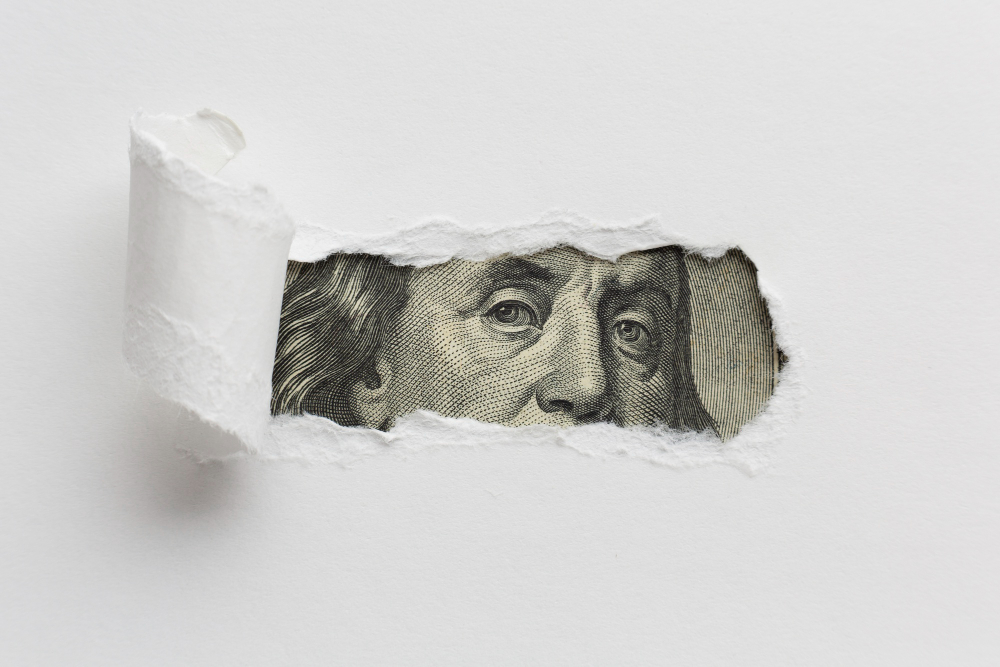As a responsible driver, you stay on top of your car insurance payments for moments like this one. After getting into an accident, it’s important to know that you can receive the coverage you need to avoid undue financial strain.

In about 43% of all car accidents, at least one driver gets injured. When an injury is involved, filing a car insurance claim takes on a new level of importance.
The problem is that filing a claim after a car accident isn’t always the most straightforward process. When should you file with your insurance versus another driver’s insurance? How long before you hit the claim filing deadline?
We’re here to answer all of these questions and more. Read on for the complete guide to filing a car insurance claim after getting into an accident.
When to File a Claim With Your Own Insurance Company
Many drivers will find that their best option after a car accident is to file a claim with their own insurance company. However, this isn’t always the easiest decision to make, especially when you’re worried about increasing premiums. Review the signs that you should file a car insurance claim against your own policy.
You Were At Fault
One of the first things that you’ll need to consider is who is at fault. If you were the only driver involved in an accident, it’s simple enough to determine that you were at fault. If the accident involved multiple drivers, determining fault is a bit more complicated.
Fault doesn’t mean that someone intentionally caused an accident. Instead, it means that their negligence caused a reasonably preventable accident. A common example of negligence is texting and driving because the driver is not giving their full attention to the road.
Generally speaking, fault will determine whose insurance is liable for an accident. If you’re at fault, you and your insurance company are liable for the resulting damages, including your own.
You Live in a No-Fault State
Some states have no-fault laws. If you live in a no-fault state, you will pursue a claim with your own insurance company regardless of who bears the blame for the accident.
Chances are, your insurance policy includes things like PIP (personal injury protection) if you live in a no-fault state. This will cover expenses related to any injuries you and/or your passengers sustained in the accident. In other words, no-fault states require drivers to carry insurance policies that cover all possible damages to minimize (or eliminate) the need for personal injury claims.
You Didn’t Sustain Injuries
Depending on your state’s laws, you may be able to file a third-party claim whether or not another driver’s negligence led to injuries. However, you can only file a personal injury claim if you meet all of the following criteria:
- another driver’s negligence caused the accident
- you sustained serious injuries in the accident
- your injuries have led to significant financial strain in the form of medical bills, lost income, et cetera
If all you’re looking at is damage to your vehicle, it may make more sense to file a claim with your own insurance company.
The Damage Exceeds Your Deductible
It’s also useful to discuss when it isn’t pertinent to file a claim, at all. One of the most obvious signs that you should pay for vehicle damage out of pocket is when the cost of the damage doesn’t exceed your deductibleor doesn’t exceed it by much.
Remember, your monthly premium is likely to increase when you file a claim with your car insurance. Even if it doesn’t this time, it will if you need to file another claim in the near future. Always weigh the cost-to-benefit ratio before you file a claim with your insurance company because filing a claim at the wrong time can cost more than paying for the damage out of pocket.
When to File a Claim With Another Driver’s Insurance Company
Under specific circumstances, drivers have the option to pursue a claim against another driver’s insurance policy. This becomes a legal matter and is considered a pursuit of financial justice. Take a look at the signs that you should consider filing a claim against another driver’s car insurance policy.
The Other Driver Is At Fault
If you don’t live in a no-fault state, it’s important to evaluate the evidence to determine whose fault the accident was. Even if you share some of the blame, you may still have grounds to file a claim against another driver’s insurance policy.
It may be to your benefit to consult with an attorney before making the choice to file a claim with your own insurance policy. An attorney can break down your state’s car accident claim laws and evaluate the evidence you have before providing an opinion on your best options moving forward.
You’re Dealing With More Than Just Property Damage
As we mentioned earlier, a car accident claim falls under the umbrella of personal injury law when it involves serious injuries and financial strain. In a country with high medical costs and limited health insurance options, taking on things like medical debt can have long-term financial impacts. You may have grounds to recover those damages.
Take a look, for example, at the potential payout for rear end collision claims. As you can see, even something as seemingly straightforward as getting rear-ended can lead to high-value claims when victims sustain injuries. Always work with a lawyer when pursuing a car accident claim that involves more than just property damage.
The Damages Exceed Your Insurance Company’s Limits
As we’ve mentioned already, each state has its own unique laws regarding things like car accident claims. If you live in a no-fault state, that doesn’t automatically mean that you will never have grounds to file a third-party claim. Some no-fault states do make exceptions that allow victims to pursue a claim against the negligent party’s insurance policy.
One possible exception is when the damages you’re facing exceed your insurance policy’s maximum limit. For example, if you have $25,000 of PIP and you need $50,000 to cover medical expenses and lost income, you may be able to file a second claim against the at-fault driver’s insurance.
Steps to Filing a Car Insurance Claim
Filing a car insurance claim after an accident isn’t as simple as letting an insurance company know what happened. Whether you’re dealing with someone else’s car insurance company or your own, you’re going to have to fight for the compensation you deserve. This is because insurance representatives, from adjusters to lawyers, have one goal: to minimize payouts from the insurance company.
Follow the steps below when filing a car insurance claim so that you can present the best case possible.
Know The Claim Filing Deadline
When you’re dealing with the aftermath of a car accident, filing a claim (particularly against another driver) isn’t always top of mind. After all, you’re dealing with injury recovery, difficulty at work, a damaged vehicle, and more.
The truth is that the faster you can get started on filing a claim, the better. Each state has its own statute of limitations on filing a car accident claim, ranging from one to six years. If the clock runs out, you’ll have to find alternative ways to pay off any related debt.
Gather Evidence and Info
What should you do in the immediate aftermath of a car accident? Even if you don’t know who was responsible, it’s time to start gathering evidence and info. Call the police and start taking photos and videos of the accident scene, including any surrounding details like signs or stop lights that can help recreate the accident if needed.
You should also ask for the name and insurance information of every driver involved. When talking to other drivers, do not say anything about who you think was responsible for the accident. Most importantly, do not admit any fault of your own.
Seek Medical Care
If you sustained serious injuries, seek emergency medical care. If not, make sure to seek medical care as soon as possiblepreferably before you go home after an accident occurs. There are two reasons for this.
The first is that many people go into shock during and after a car accident, making it difficult to notice injuries with no visible symptoms (e.g., brain or spinal injuries). It’s crucial that you get a professional medical opinion before determining that it’s safe for you to go about your daily life. The second is that if you do need to file a claim, you will need sufficient evidence that you have sustained injuries and that you’re doing your best to treat them.
Consult an Attorney
Once you receive medical attention, you may want to consult an attorney before involving your own insurance. As we mentioned earlier, this is the best way to determine whose insurance policy you should file a claim against.
If you do need to file a car accident claim for property damage, injuries, and more, you’re going to want to have an attorney in your corner. The at-fault driver’s insurance company will involve attorneys of their own to cast doubt on your case and reduce your settlement. Hiring a lawyer before you’ve filed your claim is the best way to put together a strong case and secure the largest settlement possible.
File Your Claim
Once you have professional opinions backing your decision, it’s time to file a claim. If you are filing a claim with your own insurance company, they will assign an adjuster to your case once you file the appropriate car insurance claim documents.
If you are filing a claim with another driver’s insurance, you can expect things to take a little bit longer. Depending on your state’s claim filing process, you may need to begin by filing a claim with your local court system. You will then need to follow the court’s procedures to inform the other involved parties of your claim.
Negotiate Damages and Settle
When filing your claim, you will need to present evidence of the case and state the amount of damages you are filing for. Be sure to include all relevant documentation, including medical bills, car bills, and evidence of reduced or lost income. After you file your claim, you will need to negotiate damages and settle with the insurance company.
An estimated 90% of car accident cases settle outside of the courtroom. A good attorney will tell you when they believe that an insurance company isn’t going to go any higher and when to accept their offer. In rare cases, you may need to file a lawsuit.
File a Lawsuit
You should only file a lawsuit if you are confident that your claim is worth more than the maximum amount the insurance company is willing to offer. When a lawsuit goes to court, you and your attorney have less control over the outcome.
Ultimately, a judge will decide how much an insurance company owes you. This may be less than what you were expecting and can consume additional time and resources. Working with an attorney you trust from the beginning can reduce the chances of going to court arbitrarily.
Start Your Car Accident Case ASAP
If you were in a car accident that led to serious damages, the next step is filing a car insurance claim. Use this guide to determine when to file a claim with your insurance company, when to file a third-party claim, and what steps to follow in the process.
Looking for ways to rebuild wealth after a car accident? Take a look around as we discuss ways to make money from home so that you can access more financial security while you recover.








